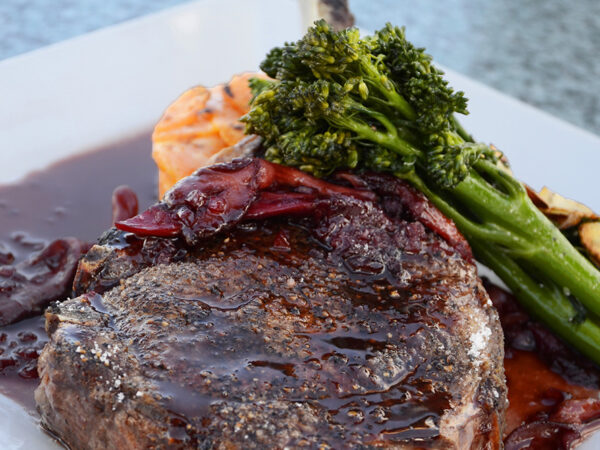Introduction
Choosing the right diet can be a daunting task, especially with the plethora of options available today. Two popular dietary approaches that have gained significant attention are the ketogenic diet (keto) and the paleolithic diet (paleo). Both diets have their unique principles and benefits, but which one is right for you? In this article, we will explore the key differences between the keto and paleo diets, their potential health benefits, and help you make an informed decision based on your individual goals and preferences.
What is the Ketogenic Diet?
The ketogenic diet, commonly known as the keto diet, is a low-carbohydrate, high-fat diet that aims to shift the body’s primary fuel source from carbohydrates to fats. The fundamental principle of the keto diet is to induce a metabolic state called ketosis, where the body produces ketones from fat breakdown to be used as an alternative energy source.
How Does the Keto Diet Work?
The keto diet restricts carbohydrate intake to a minimal level, typically below 50 grams per day, forcing the body to enter a state of ketosis. In ketosis, the liver converts stored fat into ketones, which are then used by the body as an energy source instead of glucose derived from carbohydrates.
Benefits of the Keto Diet
- Weight Loss: The keto diet has gained popularity for its potential to promote weight loss. By reducing carbohydrate intake, the body is encouraged to burn stored fat for energy, leading to fat loss.
- Improved Blood Sugar Control: Due to its low-carb nature, the keto diet may help stabilize blood sugar levels and improve insulin sensitivity, making it a potential option for individuals with type 2 diabetes.
- Enhanced Mental Clarity: Some people report improved mental focus and cognitive function while following the keto diet. The ketones produced during ketosis are believed to provide a stable energy source for the brain.
What is the Paleo Diet?
The paleolithic diet, often referred to as the paleo diet or the caveman diet, is based on the presumed eating habits of our ancient ancestors from the Paleolithic era. The paleo diet focuses on consuming whole, unprocessed foods that were available to early humans.
Key Principles of the Paleo Diet
- Emphasis on Whole Foods: The paleo diet encourages the consumption of whole, nutrient-dense foods such as lean meats, fish, fruits, vegetables, nuts, and seeds while excluding processed foods, grains, legumes, and dairy products.
- Elimination of Processed Foods: Processed foods, which are known to be high in refined sugars, unhealthy fats, and artificial additives, are avoided in the paleo diet.
Benefits of the Paleo Diet
- Improved Nutrient Intake: By eliminating processed foods and focusing on whole, nutrient-dense options, the paleo diet can potentially improve nutrient intake, including vitamins, minerals, and antioxidants.
- Reduced Inflammation: The paleo diet’s emphasis on whole foods and exclusion of processed foods may help reduce inflammation in the body, which is often associated with chronic diseases.
- Potential Weight Loss: Similar to the keto diet, the paleo diet can aid in weight loss by promoting the consumption of whole foods and reducing calorie-dense processed foods.
FAQs
-
Is the keto diet suitable for everyone?
The keto diet may not be suitable for everyone, especially those with certain medical conditions or individuals taking specific medications. It’s important to consult with a healthcare professional before embarking on the keto diet, especially if you have diabetes, liver or kidney disease, or a history of disordered eating.
-
Can I follow the paleo diet if I’m a vegetarian?
The paleo diet is primarily focused on animal-based foods, which can make it challenging for vegetarians to follow strictly. However, with some modifications, it is possible for vegetarians to adopt a modified version of the paleo diet. Instead of meat, they can include plant-based sources of protein such as legumes, tofu, tempeh, and seitan. Nuts, seeds, and eggs can also be incorporated into the diet to meet protein needs. However, it’s important to note that the modified vegetarian paleo diet may not fully align with the original principles of the paleo diet.
-
Does the keto diet lead to nutrient deficiencies?
The keto diet, when followed properly, can provide all the necessary nutrients the body needs. However, there is a risk of nutrient deficiencies if the diet is not well-balanced. Since the keto diet restricts or eliminates certain food groups, such as fruits, grains, and legumes, it’s essential to ensure that you are still getting an adequate intake of vitamins, minerals, and fiber. To mitigate the risk of deficiencies, it’s recommended to incorporate a variety of low-carb vegetables, healthy fats, and moderate protein sources into the diet. Consulting with a healthcare professional or registered dietitian can also help ensure proper nutrient intake while following the keto diet.
-
Which diet is better for weight loss, keto, or paleo?
Both the keto and paleo diets have been associated with weight loss due to their emphasis on whole foods and reduced intake of processed foods. However, the effectiveness of each diet for weight loss may vary depending on individual factors such as metabolism, adherence, and personal preferences. Some individuals may find the keto diet more effective for weight loss due to its ability to induce ketosis and promote fat burning. On the other hand, others may prefer the paleo diet’s focus on whole, unprocessed foods, which can lead to reduced calorie intake and weight loss. Ultimately, the best diet for weight loss is one that you can sustain in the long term and suits your individual needs and preferences.
-
Can the keto and paleo diets be combined?
The keto and paleo diets share some similarities, such as a focus on whole foods and the exclusion of processed foods. It is possible to combine elements of both diets, creating a hybrid approach that suits your needs. This may involve following the principles of the paleo diet but also incorporating the macronutrient ratios of the keto diet. For example, you can prioritize whole, unprocessed foods while keeping carbohydrate intake low and healthy fat intake high. However, it’s important to ensure that the combined approach still meets your nutritional needs and is sustainable for you in the long term.
-
Are there any potential risks or side effects associated with the keto and paleo diets?
Both the keto and paleo diets have potential risks and side effects that individuals should be aware of. With the keto diet, some people may experience “keto flu” symptoms during the initial transition period, such as fatigue, headaches, and irritability. It’s also important to monitor your electrolyte levels, as the keto diet can cause imbalances. Additionally, the long-term effects of following a very low-carbohydrate, high-fat diet are still being studied, and more research is needed to fully understand its impact on various health markers.
For the paleo diet, some potential risks include a higher intake of saturated fats if not careful with food choices, and a lack of certain nutrients if the diet is not well-planned. It’s crucial to ensure an adequate intake of essential nutrients by incorporating a variety of whole, nutrient-dense foods into the diet.
In both cases, it’s important to listen to your body, monitor your health, and consult with a healthcare professional or registered dietitian before starting any new diet, including the keto or paleo diet.
Conclusion
In the battle of Keto vs. Paleo, there is no definitive winner. Both diets have their unique principles and potential health benefits. The keto diet focuses on low-carbohydrate, high-fat intake to induce ketosis, while the paleo diet emphasizes whole, unprocessed foods that were available to early humans. The right diet for you depends on your individual goals, preferences, and health considerations.
If you’re looking for rapid weight loss and improved blood sugar control, the keto diet may be a suitable option. However, it requires strict adherence and may not be suitable for everyone. On the other hand, if you prioritize whole, nutrient-dense foods and seek long-term sustainable eating habits, the paleo diet might be a better fit.
Remember, there is no one-size-fits-all approach when it comes to nutrition. It’s crucial to consider your unique needs and lifestyle when choosing a diet. Consulting with a healthcare professional or registered dietitian can provide personalized guidance and help you make an informed decision.
In the end, the most important aspect of any diet is to focus on overall health and well-being. Incorporating balanced meals, regular physical activity, and listening to your body’s cues will contribute to a healthy lifestyle, regardless of the specific dietary approach you choose.

